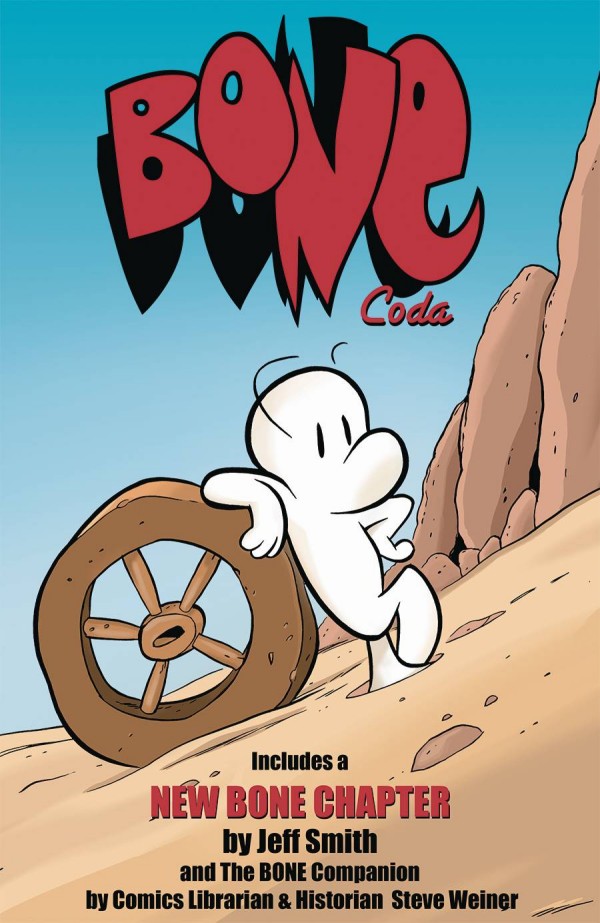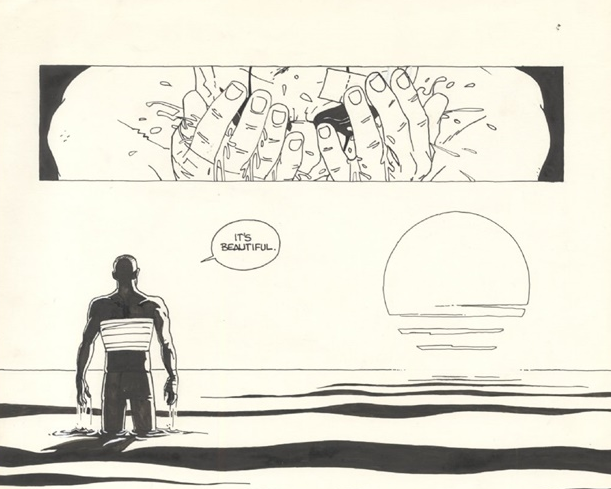 Written by R. Sikoryak
Written by R. SikoryakIllustrated by R. Sikoryak
Based on stories by Various Writers and Artists
Drawn & Quarterly
One of the things I forgot to do before I left SPX was pick up a copy of this book. I pretty much knew that was a mistake as we were driving away, but luckily the library had a copy so I wasn't denied the pleasure of reading the lovely homage/parody book, Masterpiece Comics.
Written for a variety of publications ranging from Raw to New York Press, as well as Drawn and Quarterly's own house magazine, these comics change style with a brilliance that you don't often see from a single cartoonist.
Sikoryak draws in the style of several newspaper stips, such as Blondie, Peanuts, and Mary Worth. That alone should be enough to give him the title of gifted artist. But then he adds in EC Comics house style and Bob Kane/Bill Finger to show he knows his golden age cartoon work, and you really start to get impressed. But not to denied his place in the pantheon of adaptable artists, Sikoryak even does Little Nemo and Beevis and Butthead, the latter in a Waiting for Godot parody that is arguably the best mixing choice in the entire book.
It's simply amazing to see how well Sikoryak blends classic literature and classic comics together. Blondie and Dagwood are perfect as Adam and Eve, with Dagwood's boss as an absolutely exasperated God. Garfield as the Devil with Jon a tool of Satan? Works better than you'd ever believe, especially since Sikoryak gets Jim Davis' artistic quirks down perfectly.
I really like how we even get a little bit of insight into Sikoryak's thinking though the use of bogus letter pages. Thus, we can see why he'd link Dorian Gray to Little Nemo or how he chose to take only the worst aspects of Bronte and use them for a Tales from the Crypt pastiche. While they are only small paragraphs, it was really cool to know why he chose some of the characters that he did, and his reasons make sense.
That's part of the brilliance of this collection. Your first reaction is to chuckle when you see Little LuLu walking around in the Scarlet Letter but when you stop to think about how Sartre and Schultz explored similar themes of isolation, the book takes on a whole other level of commentary that goes beyond the surface and into the idea that some ideas are universal, even if they are couched in the humor of the four-color funnybook.
And then you go back to laughing when you see Snoopy show up, dressed as the maid, talking to himself like he does in Peanuts, and reciting one of Schultz's famous quotes.
I think the short gags are probably the best, running only a few pages. Action Camus featuring the Super-Stranger probably wouldn't work as well if we explored inside, but as a series of dramatic covers, the pairing works well. I can't image trying to do Dante justice if paced across several pages, but a set of one-panel gags to tell a joke about each circle of hell ala Bazooka Joe? That's brilliant. Sikoryak seems to be able to sense just how long to make each homage.
This is not to say the three longer pieces are not as good. Sikoryak managed to make Bronte interesting to me by cutting out all the boring bits. His ability to make the characters look crazed (ala EC Comics) but still stilted Victorians is pretty impressive. Similarly, he takes the more serious tone of The Scarlet Letter and manages to find a way to make it fit with the cartoon characters who inhabit it. There's no way to make Crime and Punishment funny, but to turn Batman into a criminal and have him kill to stop a greater evil? Now that's a fascinating idea that runs a long-time cape comics reader down interesting directions!
By using characters (both literary and cartoon) who are generally familiar, Sikoryak manages to dodge the one problem that could give a reader trouble--familiarity with the work in question. I think you get more out of a Mary Worth-Macbeth mashup if you know the story behind both, but even if you didn't, they're iconic enough for any reader to get the gist. That was certainly the case for me in a few stories, such as Crime and Punishment. Odds are, you'll have neglected to read at least one or two of the references Sikoryak uses, possibly more if you weren't an English major.
However, when you do know both references, the details Sikoryak gets right are striking. I've mentioned a few above that stood out to me, and I'm sure each reader will have their own favorites, based on their favorite stories contained within the pages of Masterpiece Comics. Perhaps it will be the Adventure Comics homage on the cover, or the fake advertisements between stories. Regardless of you preference, there is a lot to like in this book.
Masterpiece comics works on so many levels and will keep you thinking about them long after you finish the book. I rarely say this about a humor book, but I think I could guarantee that *anyone* who reads this book will immediately love it. The concept is so strong and the execution is so well done that I can't see anyone having Masterpiece Comics miss the mark for them.
I'm really sorry I didn't get this one read in time to make my favorites list for 2009. If you are a lover of classic literature (heck, even if you're not), you owe it to yourself to find this book and read it. You'll be glad you did!







